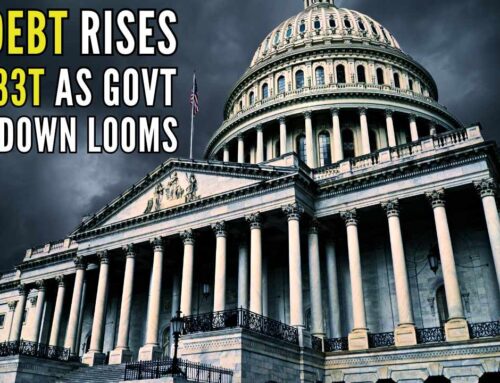At Decker Retirement Planning, it’s our job to help you sail blissfully through retirement, not get destroyed by a market crash. That’s why we follow the markets closely and have created a proprietary method for designing your retirement plan up through age 100 and beyond.
No one has a crystal ball, but as retirement planners who’ve been doing this for years, we know the signs that indicate storms on the horizon when it comes to stock markets. We use a unique planning process that primarily uses principal-guaranteed accounts (guaranteed by insurance company reserves and/or the FDIC) to generate retirement income for the first 20-25 years of retirement, as well as specific investment management strategies designed to take advantage of both up and down stock markets for the last part of retirement and/or wealth transfer.
No one’s retirement plan is exactly the same, but we do apply what has worked historically to each client. We use research, math, and spreadsheets. We can happily say our clients were unaffected by the 2008 recession a decade ago.
Here are some tips every person getting close to retirement age should heed:
Don’t Chase Hot Stocks
It’s hard not to covet returns like the 162.0% rise in Amazon stock over the last 2 years through August compared to the broader S&P 500, which is up by only 34% during the same period. But, keep in mind, this is really due to creative destruction. Amazon is disrupting how retail sales are done, point blank. This has had far-reaching effects: brick and mortar retailers and retail chains are going out of business, and commercial real estate indoor malls and strip malls are facing increasingly-empty storefronts.
It’s not the first time this level of industry disruption has happened in recent history. Smartphones replaced Ma Bell (AT&T)—and Kodak—both considered “blue chip” for decades. Walmart drove small retail shops and grocers out of business in rural markets throughout the United States to become a retail behemoth. Travelocity, and similar websites, replaced travel agents. Netflix, and other streaming services, supplanted Blockbuster. In fact, FAANG (Facebook, Apple, Amazon, Netflix, and Google) stocks are breaking records; it’s a new economy, they’re setting their own frontier.
New innovations are being created and adopted in multiple sectors. Use self-checkout lines, artificial intelligence, self-driving cars, drone delivery, pharmaceutical and healthcare breakthroughs, and space travel as examples.
Technology and innovation are what people want right now, but people are fickle and greedy. They want what they want, when they want it, and for the price they want it for. What consumers want drives stock prices up or down, which is not a safe situation for retirement. That’s why it really doesn’t make any sense to hold individual stocks.
Forget About Buy and Hold Pie Charts
Like Warren Buffet says, rule number one is to never lose money, and rule number two is: “see number one.” Unfortunately the pie chart won’t help retirees achieve this goal.
The pie chart is what bankers and brokers are trained to use for portfolio “asset diversification.” It breaks down all of your assets into different mutual funds that are allocated to domestic stocks, foreign stocks, small cap, large cap, etc. Then, the other part of the pie chart is in bond funds— domestic bonds, government bonds, corporate bonds, etc.
What you get is whatever the stockbroker or banker’s firm offers for sale. This may work just fine when you’re in your 20s, 30s and 40s. But, as you get older, it definitely doesn’t.
Rather than creating an actual retirement distribution plan, a pie chart uses a terrible method called the “Rule of 100” for retirement. The Rule of 100 says that as you age, you should have more bonds and bond funds in proportion to stocks. For instance, when you’re 60 years old, stockbrokers move you into 60% bonds. When you’re 61, it’s 61%, etc. Every year, they increase your bond holdings as a percentage based on your age.
The Rule of 100 might have been a good one to live by back in 1980, when you could get a 15% return on a 10-year Treasury note. But, it makes no sense to put 60-70% of your assets in something that’s yielding close to 3% today. You can’t live on that.
It gets worse.
Dump the “Safe Bonds” Antiquated Strategy
Interest rate risk makes bonds and bond funds even more dangerous for retirees. In fact, interest rate risk is at an all-time high because interest rates are at all-time lows. When interest rates rise, the liquidity and therefore value of bonds and bond funds, goes down.
Bond funds have always been (or just the bond market in general has always been) used as an avenue for safety, for a little bit more diversification and a kind of a safe haven to avoid risk. Today, the opposite is true. If you don’t believe this, all you have to do is look back at recent history. For example, in 1994 when interest rates jumped up from 6% to 8%, according to Morningstar—which is a database for all the mutual funds and bond funds out there—the average bond fund fell by 20% that year. This happened again in 1999 when rates climbed up from about 4% to 6%, and the average bond fund ended up falling by 17%.
There are big investment headwinds looming now. Many experts predict the next bubble to burst will be bonds. Trading can and will dry up in a heartbeat, right when retirees need to sell in order to create income to live on. Once again, we can look backward to 2008, when high-yield benchmarks lost a third of their value within a few weeks. Many individual bond issues lost much more.
Some say the bond market collapse will go deeper and happen faster this time because of many factors, such as Dodd-Frank, TARP and quantitative easing legislation (in response to 2008) creating an artificial economy worldwide, extremely low interest rates which are being raised by the Federal Reserve, and corporate bonds which may be set to fall to junk bond rating levels because of tariffs and other factors affecting demand. Legal and contractual constraints may then force institutions to sell, pressuring all except the highest grade corporate and sovereign bonds. The selling may likely spill over into stocks and could trigger a drastic bear market.
In the latter part of 2020, at the very latest, the U.S. government debt will be at $40 trillion. There is a lot of tension among financial professionals who are anxiously monitoring all of this. Bonds are just part of the debt that they’re scared about, and some are already selling bonds off.
Don’t Withdraw Retirement Income from Volatile or Fluctuating Accounts
As we’ve explained, with the pie chart, both stocks and bonds / bond funds are at risk in the market, so your entire retirement is at risk. You can “diversify” all you want, but if the market goes down, it all goes down. You run the risk of running completely out of money when you withdraw funds from fluctuating market accounts, because you will be compromising your gains and accentuating your losses.
You can think of it like compound interest in reverse. This is what destroyed retirements in 2008.
What you Should do in Retirement
The 10,000 Baby Boomers turning 65 every day in America are asking themselves, “When can I retire?” “Have I saved up enough money?” “When is the next market crash going to happen?” And importantly, “If I retire, am I going to outlive my money?”
The questions hold a tinge of panic—the stock market’s record bull-run is affecting everyone—we can all feel a crash coming in our gut and in our bones. But for Baby Boomers, the stakes are higher. The number one fear of retirees is not death, it’s running out of money in retirement.
So how can you protect yourself if (or when) the market takes a dive?
The whole idea of moving to safety is correct, because when you stop working, your retirement savings become your source of income when you no longer have a paycheck coming in. Since bonds aren’t safe, you need to find what is safer.
A fiduciary retirement planner like Decker Retirement Planning (unlike a stockbroker or banker offering pie charts), can help you look at your personal situation and create a custom retirement plan and distribution strategy based on many things, like:
- Your Social Security benefit (and the best way to optimize it)
- Pension income
- Other income (like real estate rental income)
- Qualified or defined benefit plans (like 401(k)s), which may come with hefty income taxes unless you run the numbers and create a logical strategy to mitigate taxation
- Your budget in retirement (you will probably spend more initially because you’ll have more time and more desire to do things)
- Yearly cost of living increases
- Health care needs
- Risk management for possible long-term care or death of a spouse
- Your estate plan and tax-advantaged transfer to beneficiaries/heirs/charities
If you are at all concerned about your current retirement plan (or lack thereof), you deserve honest answers from a fiduciary firm required to place your best interests ahead of their own.


